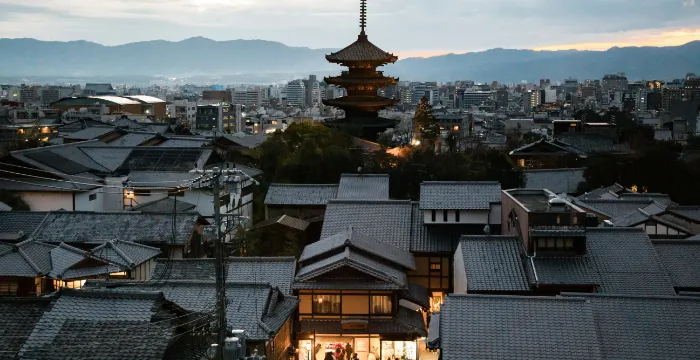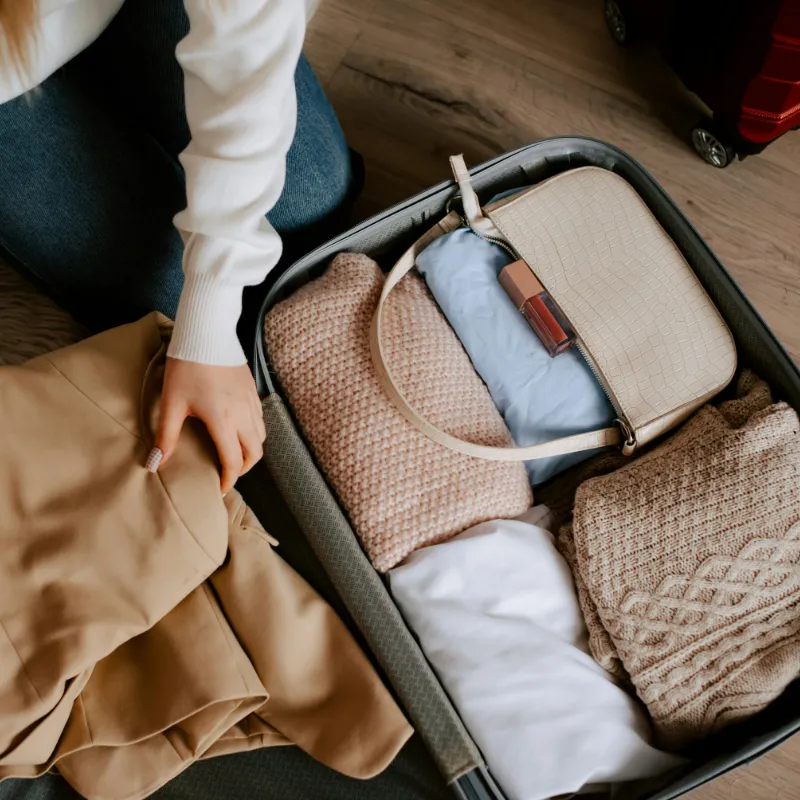Kyoto Unveiled: Ultimate 5-Day Itinerary for First-Time Visitors
Step off the Shinkansen in Kyoto and you step straight into a world where ancient tradition and modern life dance in perfect harmony.
Unlike the neon-drenched futurism of Tokyo, Kyoto moves to a slower, more graceful rhythm. It’s a city of 1,600 Buddhist temples and 400 Shinto shrines, of geishas gliding through lantern-lit alleys, of serene Zen gardens that invite contemplation and of culinary traditions refined over centuries. For the first-time visitor to Japan, Kyoto is often the city that captures the heart, offering a tangible connection to the country's imperial past.
Planning a trip to a city so rich in culture can feel overwhelming. With countless sights scattered across its distinct districts, a well-structured plan is essential to truly soak in the magic without feeling rushed. This comprehensive 5-day itinerary is designed to be your ultimate guide. It logically groups sights by location to minimize travel time and maximize your experience, blending iconic landmarks with hidden gems, cultural immersion and unforgettable food. We’ll cover everything from navigating the bus system to understanding temple etiquette, ensuring your first encounter with this enchanting city is as seamless as it is memorable. So, take a deep breath and let’s journey into the soul of Japan.
- Pre-Trip Essentials: Getting Your Bearings
- Day 1: The Wonders of Eastern Kyoto (Higashiyama)
- Day 2: Golden Pavilions and Zen Gardens (Northwestern Kyoto)
- Day 3: Torii Gates and Sake Tasting (Southern Kyoto)
- Day 4: The Magic of Arashiyama Bamboo Grove (Western Kyoto)
- Day 5: Imperial Palace, Nishiki Market & Departure
- What to Eat in Kyoto: A Culinary Journey
- Budgeting for Your Trip
- Final Thoughts
Pre-Trip Essentials: Getting Your Bearings
Before we dive into the daily plan, let's cover the basics.
- Best Time to Visit: Spring (late March to April) for the iconic cherry blossoms (sakura) and Autumn (mid-November to early December) for stunning fall foliage (koyo) are peak seasons. They are breathtaking but crowded. For fewer crowds and pleasant weather, consider the shoulder months of May, June, September and October.
- Getting Around: Kyoto’s subway system is less comprehensive than Tokyo’s. Your best friends will be the city buses and your own two feet. Purchase a Suica, Pasmo or ICOCA card (all are interchangeable) for easy tap-on, tap-off travel on buses and trains. A one-day bus pass can also be cost-effective. For trips between major hubs, the train lines (JR, Hankyu, Keihan) are excellent.
- Where to Stay:
- Downtown (Kawaramachi/Karasuma): Central, excellent for transport, shopping and restaurants.
- Gion: Atmospheric, traditional and beautiful, but can be expensive.
- Near Kyoto Station: Convenient for arrival/departure and day trips, but lacks the charm of other areas.
- Cultural Etiquette: Bow when greeting someone. Be quiet on public transport. Remove your shoes when entering temples and traditional inns (ryokans). Tipping is not customary and can be considered rude.
- Visa: Find the most recent visa requirements for Japan on the ministry of foreign affairs of Japan official website.
- Hiking Shoes: Since you will be walking a lot, it is encouraged to wear decent hiking shoes to avoid bleasters and pain in your feet.
Day 1: The Wonders of Eastern Kyoto (Higashiyama)

Today is a deep dive into arguably Kyoto’s most famous and well-preserved district. Wear your most comfortable shoes.
Morning: Kiyomizu-dera Temple
Start your day early to beat the crowds at Kiyomizu-dera, the "Pure Water Temple." Perched on a hillside, its massive wooden stage, built without a single nail, offers panoramic views of the city. Below the main hall, the Otowa Waterfall’s three streams are said to grant health, longevity and success in studies. The walk up to the temple through the Higashiyama district, with its narrow lanes, traditional shops and sweet-smelling snack stalls, is an experience in itself.
Afternoon: Gion District and Yasaka Shrine
From Kiyomizu-dera, meander down the picturesque Sannenzaka and Ninenzaka stone-paved slopes. These impossibly charming streets are lined with wooden houses, teahouses and craft shops. Make your way towards the Yasaka Shrine, a vibrant and important shrine located at the end of Shijo Avenue. After exploring the shrine, it’s time to wander through Gion, Kyoto's famous geisha district. The most beautiful area is Hanami-koji, but for a higher chance of spotting a geiko (Kyoto dialect for geisha) or maiko (apprentice geiko) on her way to an appointment, head to the quieter Shirakawa Lane as dusk falls. Remember to be respectful and never block their path for a photo.
Evening: Pontocho Alley
For dinner, cross the Kamo River to Pontocho Alley. This narrow, atmospheric lane is packed with restaurants, from exclusive kaiseki establishments to more casual yakitori bars. It’s a magical place to end your first day.
Day 2: Golden Pavilions and Zen Gardens (Northwestern Kyoto)

Today explores some of Kyoto's most visually stunning Zen sites.
Morning: Kinkaku-ji (The Golden Pavilion)
Start with one of Japan's most iconic images: Kinkaku-ji. This Zen Buddhist temple’s top two floors are completely covered in gold leaf, creating a breathtaking reflection in the surrounding Mirror Pond. The structure you see today is a meticulous reconstruction from 1955 after the original was destroyed by a monk, but its beauty is undeniable. The surrounding garden is a masterpiece of Japanese landscape design.
Late Morning: Ryoan-ji Temple
A short bus ride from Kinkaku-ji is Ryoan-ji, home to Japan's most famous rock garden. Its stark, minimalist beauty, fifteen rocks set in a sea of raked white gravel, is a profound object of meditation. The mystery is that from any vantage point, at least one rock is always hidden from view. Contemplate its meaning or simply enjoy the feeling of profound peace it evokes.
Afternoon: Nijo Castle
Travel back towards the city center to visit Nijo Castle. This was the Kyoto residence of the Tokugawa shoguns. It's famous for its ornate architecture and, most intriguingly, its "nightingale floors." These floors were designed to chirp when walked upon, acting as a security system to alert guards of intruders. The castle's gardens and lavishly painted screen doors offer a glimpse into the power and artistry of the Edo period.
Day 3: Torii Gates and Sake Tasting (Southern Kyoto)

Prepare for an unforgettable journey through thousands of vermilion gates.
Morning: Fushimi Inari Shrine
This is the head shrine of Inari, the Shinto god of rice and business. The main draw is the thousands of vibrant red-orange torii gates that form a network of trails up the sacred Mount Inari. Each gate is a donation by an individual or a company. You can spend hours hiking the full circuit (2-3 hours) or simply explore the dense, magical lower sections. The higher you climb, the fewer people you’ll encounter.
Afternoon: Fushimi Sake District
After descending from the mountain, take a short train ride to the Fushimi Sake District, one of Japan's most renowned sake-producing areas. The willow-lined canals and traditional wooden brewery buildings are incredibly scenic. Visit the Gekkeikan Okura Sake Museum to learn about the brewing process and enjoy a tasting session. Many smaller breweries also offer tours and tastings.
Day 4: The Magic of Arashiyama Bamboo Grove (Western Kyoto)

A day of natural beauty on the western outskirts of the city.
Morning: Arashiyama Bamboo Grove & Tenryu-ji Temple
Arrive early, and I mean early (by 7:30 AM), to experience the ethereal beauty of the Arashiyama Bamboo Grove before the crowds descend. Walking through the towering stalks as the light filters through is a truly otherworldly experience. Adjacent to the grove is Tenryu-ji Temple, a UNESCO World Heritage site with one of Kyoto's most beautiful landscape gardens, which uses the surrounding mountains as "borrowed scenery" (shakkei).
Afternoon: Iwatayama Monkey Park and Togetsukyo Bridge
Cross the iconic Togetsukyo Bridge ("Moon Crossing Bridge") and make the 20-minute hike up to the Iwatayama Monkey Park. At the top, you'll be rewarded with fantastic views of Kyoto and the chance to see Japanese macaques roaming freely. It’s a fun and unique experience. Afterwards, explore the charming streets of Arashiyama, perhaps enjoying a boat ride on the Hozugawa River.
Day 5: Imperial Palace, Nishiki Market & Departure

A final day soaking in imperial history and local flavors.
Morning: Kyoto Imperial Palace
The former ruling palace of the Emperor of Japan, the Kyoto Imperial Palace, is located within the vast and pleasant Kyoto Gyoen National Garden. While the buildings can only be viewed from the outside (unless on a specific guided tour), the sheer scale and elegant architecture give you a sense of Japan's imperial history. It's a peaceful place for a morning stroll.
Afternoon: Nishiki Market
Dive into Kyoto's culinary heart at Nishiki Market, a five-block-long shopping street known as "Kyoto's Kitchen." Here you'll find everything from fresh seafood and local produce to Japanese sweets, pickles and sake. It's a feast for the senses. Graze your way through lunch by trying various samples and street food snacks like tako tamago (octopus with a quail egg in its head) or freshly made rice crackers. It's the perfect place to buy edible souvenirs before heading to the station for your departure.
What to Eat in Kyoto: A Culinary Journey
- Kaiseki: A traditional multi-course Japanese dinner. An art form that balances taste, texture and appearance.
- Shojin Ryori: Traditional vegetarian Buddhist cuisine, often found near temples.
- Yudofu: Silky tofu simmered in a light broth, a specialty of Arashiyama.
- Matcha: Kyoto is famous for green tea. Try matcha-flavored everything, from ice cream to soba noodles.
- Kyo-wagashi: Exquisite and beautiful Japanese sweets, often served in tea ceremonies.
Budgeting for Your Trip
- Budget Traveler: $70-$100 USD/day. Staying in hostels, eating at small noodle shops and convenience stores, using bus passes.
- Mid-Range Traveler: $150-$250 USD/day. Staying in business hotels, enjoying a mix of casual and nice sit-down meals, taking the occasional taxi.
- Luxury Traveler: $400+ USD/day. Staying in high-end hotels or ryokans, dining on kaiseki, using private guides and taxis.
Read more tips and tricks for traveling budget-friendly
Final Thoughts
Kyoto is a city that reveals its secrets slowly. This itinerary is a starting point, a framework for you to build upon. Allow yourself to get lost in its quiet lanes, to stumble upon a forgotten shrine or to simply sit by the Kamo River and watch the city go by. It is in these unscripted moments that the true magic of Kyoto is found.




